by Ken Lain, the mountain gardener
- Flowers that look like daisies.
- What plants go well with daisies?
- Plants that look good all year round?
- Perennial daisies bloom all summer.
- What are colorful daisies called?
- White daisy-like flower with yellow center.
- Are daisy and chamomile the same?

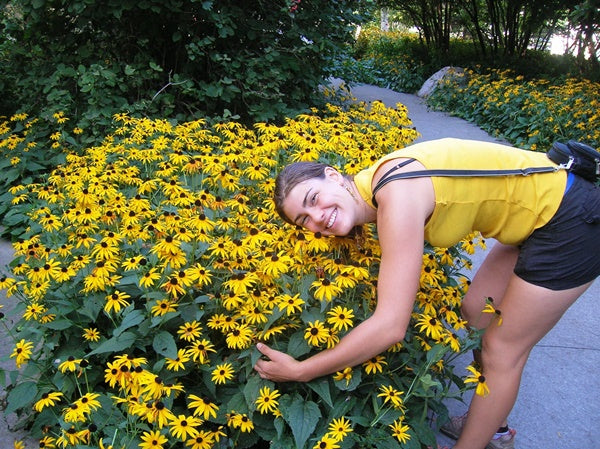
A favorite flower of days gone by would have to be a daisy, Bellis perennis. This happy-face flower with radiating white petals around a yellow center is still identifiable to even non-gardeners. Daisies are so tough in the mountain garden, but too much white is boring and plain. We developed many daisies like bloomers that offer far more color, brighter, and even easier to grow than their daisy cousin.
Each of the following companion flowers thrives like a wild daisy. Each with a classic flower arranged in a radiating pattern shows a single bloom with an enormous range of colors and bloom shapes. These new species are known for their tolerance of dry conditions, making them a good choice for mountain locations challenging other flowers.
Here are our top choices for daisy-like flowers in your garden.
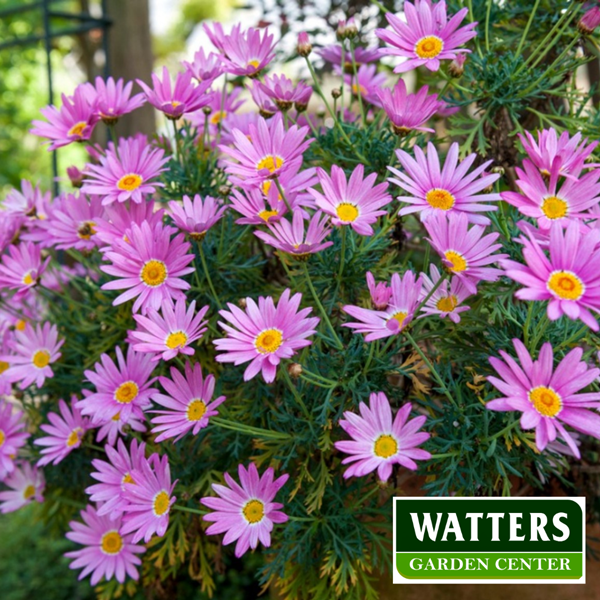
Asters contain 180 species, but the most popular variety is Aster ‘Celeste,’ which forms a clump covered with dense purple daisy-like flowers in late summer and early fall. This variety grows to knee height. All asters are late-bloomers, offering good color in late summer through autumn when most other perennials are past their prime. Asters prefer climates with cool, moist monsoon summers. Growing in the mountain wilds, this flower proves deer and javelina resistance.
- USDA Zones: 3 to 8
- Color Varieties: Purple or blue around a yellow center
- Sun Exposure: Full sun
- Soil Needs: Medium-moisture, well-drained soil
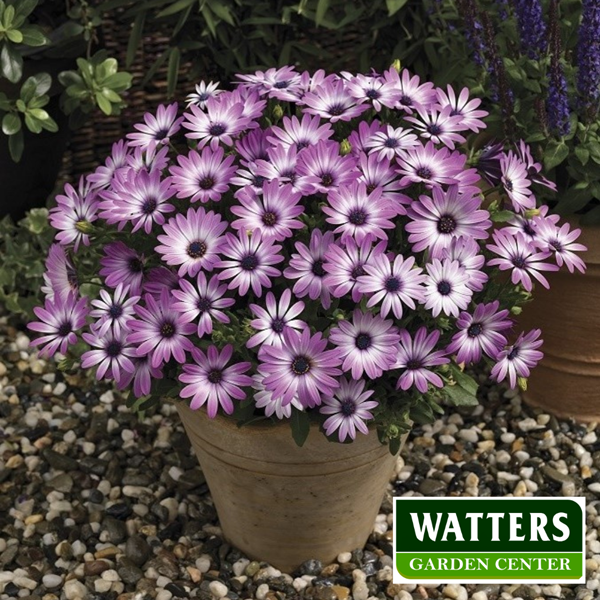
African Daisies, Osteospermum, grows 1 to 2′ feet tall, showing daisy-like flowers with stunning metallic centers, blooming spring through mid-summer. This flower need Flower Power plant food at two-week intervals to keep the hundreds of flowers emerging. African daisies are grown as annuals in mountain gardens. These plants bloom during spring and fall, resting through hot summers. Treat them like a pansy and other cool-season flowers. Pinching spent flowers only encourages continuous blooms.
- USDA Zones: 9 to 11; grown as an annual in mountain gardens
- Color Varieties: fluorescent white, pink, yellow, lavender and bi-colors
- Sun Exposure: Full sun
- Soil Needs: Rich, moist, well-drained soil
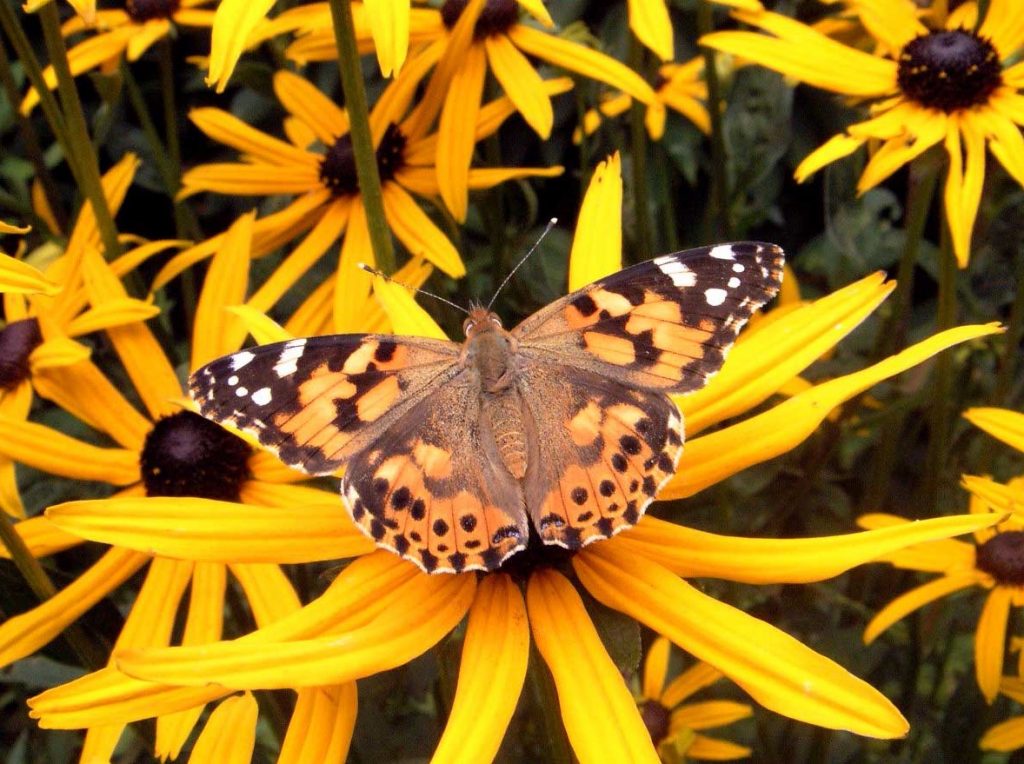
Black-Eyed Susans, Rudbeckia, has yellow flowers around a mocha center disk, growing knee height and blooming summer and early fall. Plant them in large groups for a showy mass of flowers that self-seeds freely in the garden and readily forms a colony that returns year after year. Little to no maintenance is required.
USDA Zones: 3 to 7
Color Varieties: Yellow with dark mocha center
Sun Exposure: Full sun
Soil Needs: Medium-moisture, well-drained soil; good tolerance for drought
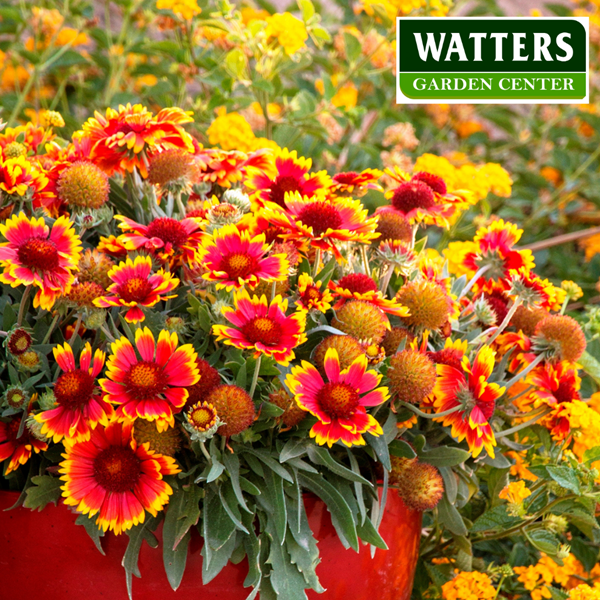
Blanket Flower, Gaillardia, is famous for its thick covering of blooms that blanket the garden in color. Gaillardia is a surprisingly easy-to-grow perennial that self-seeds easily while colonizing the wilder spaces in the landscape. Deer, javelina, and rabbit proof.
- USDA Growing Zones: 3 to 10
- Color Varieties: Red, yellow, orange, peach, and bi-colors
- Sun Exposure: Full sun
- Soil Needs: Rich soil
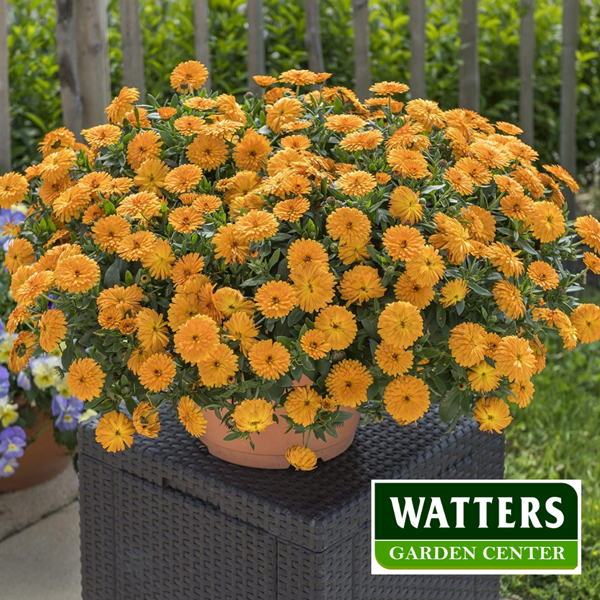
Calendula is an edible flower with medicinal qualities that repel pests naturally by attracting beneficial ladybugs and praying mantis. Uniquely different than plain garden marigolds, Calendula sports big, bold daisy-like flower heads so full they appear bushy. At just one foot, the plant blooms an exceptionally long time when spent flowers are pinched off. It readily self-seeds for years of blooming enjoyment.
- USDA Zones: 8 to 11
- Color Varieties: Yellow to deep orange
- Sun Exposure: Full sun to part shade
- Soil Needs: Rich soil
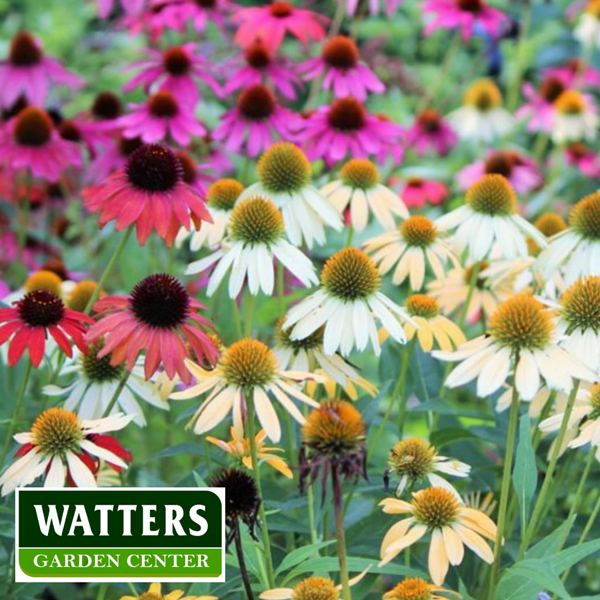
Coneflower, Echinacea, sports purple daisy-like flowers that spread through wild gardens. Beautifully grown for its medicinal properties often used as a tea. Some popular cultivars include ‘Kims Knee High,’ ‘Bravado,’ ‘PowWow White,’ ‘Tangerine Dream,’ ‘Gum Drop,’ and ‘Sunbird.’ Blooms best when divided every 3-4 years.
- USDA Zones: 3 to 10
- Color Varieties: Purple/pink; cultivars offer other colors
- Sun Exposure: Full sun to part shade
- Soil Needs: Dry to medium moisture, poor soil tolerant
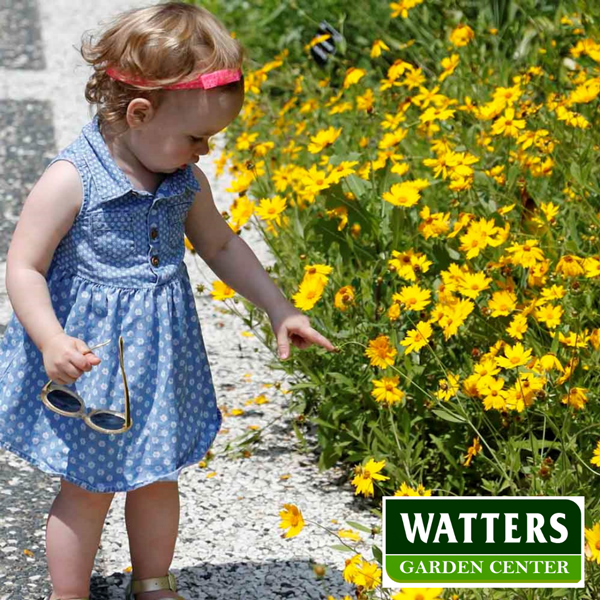
Coreopsis includes over 75 plants with daisy-like flowers. Also known as tickseed, all have daisy-like flowers, with foliage texture sporting elongated leaves, to lacy foliage. Plants are generally 1-2′ feet in height; they can be sheared back after blooming to stimulate a rebloom. These flowers attract lots of bees and butterflies every season. Deadheading encourages repeat blooms.
- USDA Zones: 3 to 9
- Color Varieties: Yellow/orange; cultivars with pink, white, purple
- Sun Exposure: Full sun
- Soil Needs: Tolerates drought and heat even in poor, rocky soils
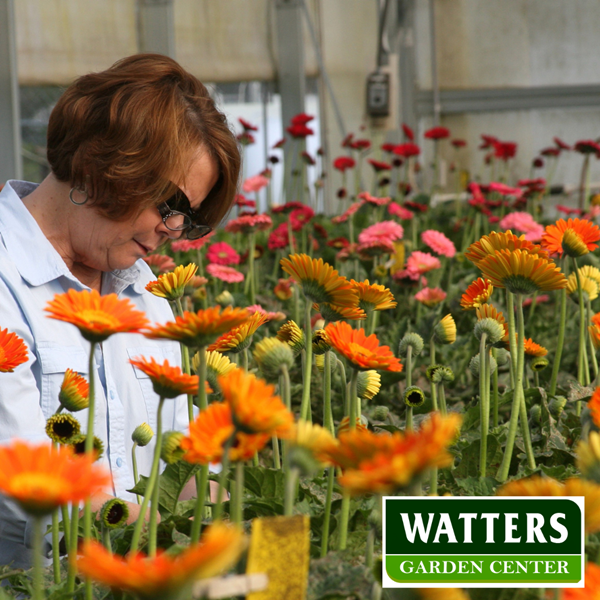
Gerbera Daisy, transvaal daisy, grows 12″ inches tall, with distinctive round flowers 4″ inches in diameter. It grows best in climates with warm days and cool nights. Pinching off spent flowers prompt ostentatious rebloom.
- USDA Zones: 8 to 11
- Color Varieties: Red, yellow, or orange
- Sun Exposure: Partial sun to full shade
Soil Needs: Medium-moisture, well-draining soil
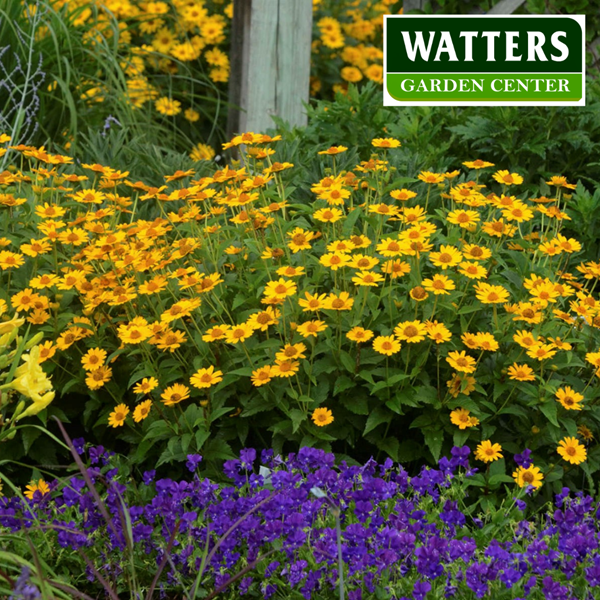
False Sunflower, Heliopsis, is a 3′ foot plant also known as Oxeye sunflowers. Covered with luscious yellow-orange flowers that thrive in crummy mountain soils. They tolerate drought conditions, though they bloom best with regular moisture June through August. Deadheading doubles the bloom time of this perennial flower.
- USDA Zones: 3 to 9
- Color Varieties: Orange/yellow flowers around a brown center
- Sun Exposure: Full sun
- Soil Needs: Tolerates poor soil
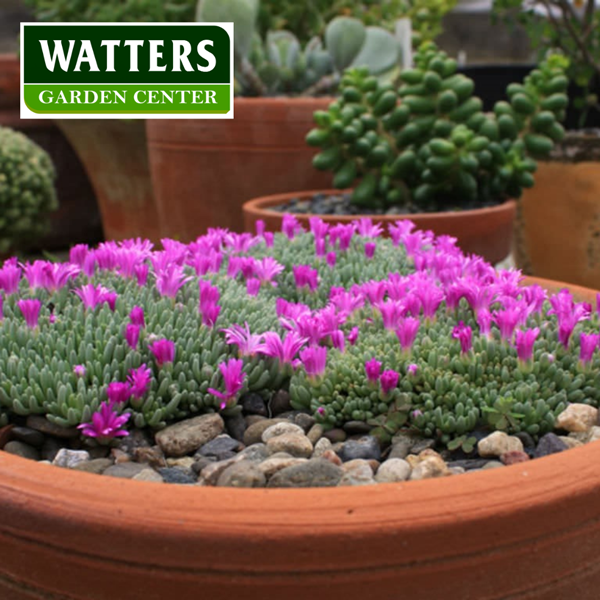
Ice Plant, Delosperma, has striking purple daisy flowers with yellow centers. The right combination of drainage and moisture yields breathtaking results. This is an ankle-high succulent perfect at blanketing the dry ground with daisy-like blooms all summer long—Javelina and deer resistant.
- USDA Zones: 6 to 10
- Color Varieties: Purple-red; also in tri-colors
- Sun Exposure: Full sun
- Soil Needs: Dry, well-drained soil
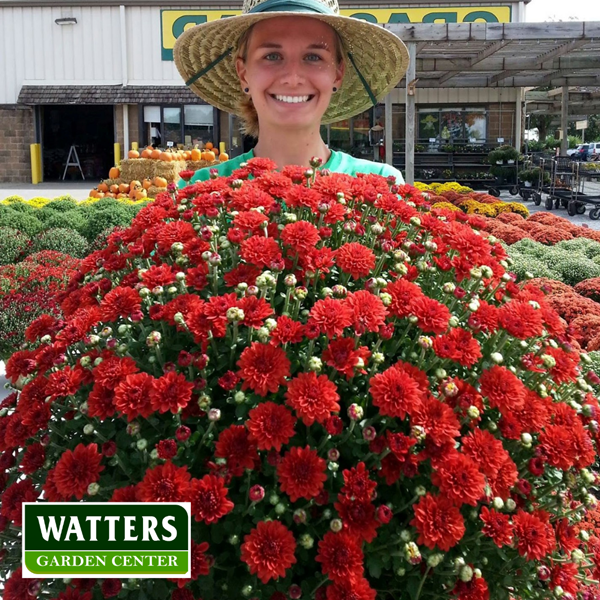
Mum, Chrysanthemum, is a hardy garden mum blooming from September through frost. This clump-forming plant grows 2′ feet tall in a plenitude of colors. Mums bloom best with consistent moisture and lots of autumn sun.
- USDA Zones: 5 to 9; often planted as annuals
- Color Varieties: A rainbow of colors
- Sun Exposure: Full sun
- Soil Needs: Rich, moist, well-drained soil
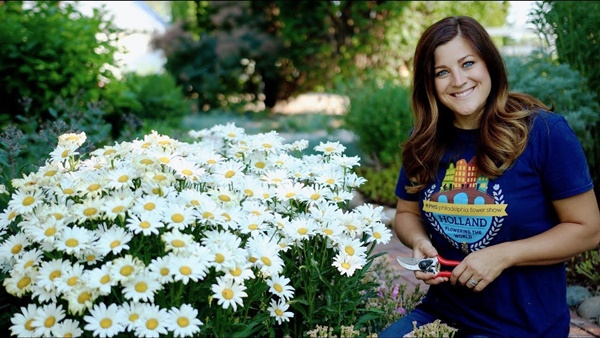
Shasta Daisy, Leucanthemum, is the most similar to common daisies of this list. ‘Becky’ is a particularly popular variety that grows to 3′ feet tall with large, 4′ inch flowers that bloom from July through September. It makes an excellent cut flower.
- USDA Zones: 5 to 9
- Color Varieties: White with yellow centers
- Sun Exposure: Full sun
- Soil Needs: Does not tolerate wet soil
Daisies never go out to style and with this list of 12 mountain bloomers that dress your gardens in a plethora of colors and fragrances.
Until next week, I’ll be helping local gardeners plant more daisies in their own yard.
Ken Lain can be found throughout the week at Watters Garden Center, 1815 W. Iron Springs Rd in Prescott, or contacted through his website at WattersGardenCenter.com or Top10Flowers.com.

